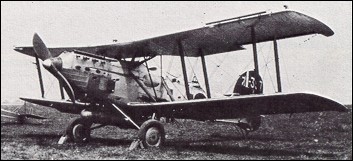 |
Mitsubishi B2M1932 |  |
| TORPEDO-BOMBER | Virtual Aircraft Museum / Japan / Mitsubishi |
 |
In 1928 Mitsubishi presented to the Imperial Japanese Navy three new types: the Mitsubishi 1MF9 Taka carrier fighter biplane, which featured a French-type avion marin keel; the Type R experimental twin-engine monoplane flying-boat, built also in a civil transport version, both of them based on Rohrbach designs; and the 3MR4 carrier reconnaissance biplane. This last was in reality designed by G. E. Petty, chief designer of the British Blackburn Aeroplane Company, and had been built in the UK. Three development prototypes were constructed subsequently by Mitsubishi, and it was decided that the aircraft would be used primarily as a carrier-based torpedo-bomber. Prolonged difficulties prevented naval adoption of the 3MR4 until March 1932, when it went into service as the Navy Type 89-1 Carrier Attacker or Mitsubishi B2M1. Powered by a 485kW Hispano-Suiza 12Lb engine, the B2M1 had a maximum speed of 213km/h, and was an equal-span biplane with wide-track landing gear, its crew of three carried in tandem cockpits. Defensive armament comprised one fixed and one movably-mounted 7.7mm machine-gun; and for offensive purposes an 800kg torpedo carried between the main landing gear legs could be supplemented by six light bombs on underwing racks. An improved B2M2 or Type 89-2 appeared in 1934, this having a wing span of 14.98m and a maximum take-off weight of 3600kg, but its overall performance showed little advantage over the B2M1. Production of both versions totalled 204, and they were used extensively for medium- and low-level bombing attacks against Chinese troops during the Shanghai Incident.
|  COMPANY PROFILE | ||||||||||||||||||||||||||
 |

|
